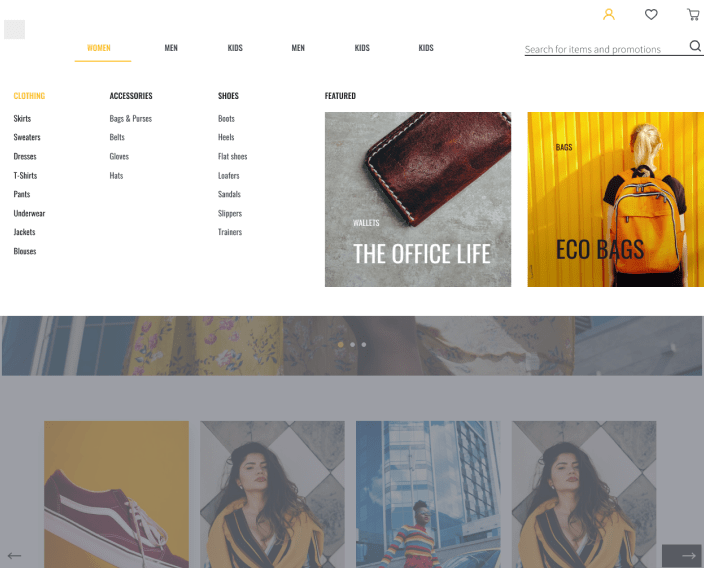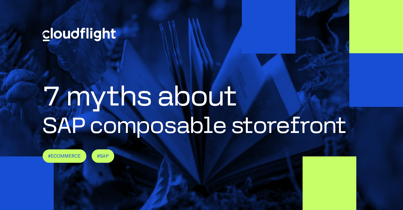Finding the best eCommerce software is not as easy as it seems. It requires a careful assessment of unique needs, available features, and tools. It’s one of the most critical decisions regarding scaling the store as your business expands. To help you with that, I want to explain all the factors you should keep in mind about Shopware 6. It’s an in-depth look at this flexible and straightforward eCommerce platform which might be the best match for your current business requirements.
What is Shopware 6?
Shopware 6 is a modern eCommerce platform connecting enterprise-level capabilities with flexibility. The platform is fully customizable and expandable with additional features or custom layout. Shopware 6 is also suitable for small and medium online companies allowing them to implement a shop in a short time based on out-of-the-box features and ready-to-use plugins.
Shopware 6 is an open-source technology using an MIT license, allowing the community to modify and redistribute the platform with no restrictions. Nowadays, building a broad and active community around the technology is crucial. It speeds up the platform’s development as community members consistently create new plugins and develop existing ones.
Shopware 5 vs Shopware 6
We should underline that Shopware 6 is not the next iteration of Shopware 5. It’s a new platform built from scratch, with a modern philosophy and architecture. Shopware 6 follows the API-first approach, allowing the creation of a unique commerce platform in a headless architecture. All functions of Shopware 6 can be controlled by API, enabling merchants to use the platform as a hub for all retail operations. This is especially so when the platform has more than one sales channel, like Amazon, social media or POS. The approach also opens the way for Shopware 6 integrations with voice assistants, wearable devices, mobile apps, and more.
What’s new on Shopware 6?
A flexible Rule Builder to customize prices, shipping, costs, and content allows users to implement even complex processes or dependencies without any programming skills.
What’s more, Shopware 6 allows for deep adaptation to the context of customers. Retailers are able to configure their offer and adapt both the content and the interface to the circumstances, allowing, for example, making orders by voice.
Shopware 6 Architecture Overview
Shopware 6 has been built from the ground up. Shopware decided to make the new platform in the API-first model so that each action in the platform is accessible via API and available in every sales channel. Such an approach enables retailers to offer their products independent of device, place, and time. Not to mention an easy integration with other systems like CRM, ERP or PIM.
Headless eCommerce
Separating the frontend and backend of the architecture is the new standard for eCommerce builds and comes with a long list of benefits for business. Learn more from our ongoing webinar series on headless architecture
The Shopware 6 platform consists of three top-level blocks:
- Shopware Core has all commerce resources and processes
- Shopware Administration is an interface to manipulate the resources from the administrator’s point of view
- Shopware Storefront is the default frontend application that provides the customer view built on the top of the core
The heart of the platform—the headless core—is built as a modular, separable, and scalable API which consists of three independent services: Admin API, Sync API, and Sales Channel API. The functionalities of the platform are strictly divided between the services.
| Admin API | Sales Channel API | Sync API |
| Configuration Data synchronization |
Transactions Search queries Content |
Bulk import |
Top Shopware 6 Features
Shopware 6 focuses on customers and their shopping experience. The key features allow for following the customers, unifying the shopping experience across channels, and preparing tailored offers.
1. Rule Builder
Rule Builder is a new feature that allows the creation of flexible rules to offer price promotions and cross-selling opportunities to specific customers. Moreover, it can be used to display or hide content based on business rules.
The tool enables customer targeting using complex and nested rules which are both understandable and straightforward. Even non-technical people can map complex processes without any programming effort thanks to an intuitive user interface.
2. Shopping Experiences
Shopping Experiences, as the successor to Shopping Worlds in Shopware 5, is a new CMS for combining commerce and content with building a unified shopping experience across all channels. Thanks to its intuitive usability, it requires no prior technical knowledge.
Shopping Experiences consists of prefabricated blocks with multiple combinations between texts, images, commerce components, and videos. Every block is responsive by default and adapted to the specific sales channel. The merchant can use the tool to prepare the layout for category pages, product pages or landing pages. Finally, Shopping Experiences is the first fully-integrated eCommerce CMS with a PWA application.
3. Sales Channels
Shopware has built its new platform with the philosophy of selling wherever your customers are. Shopware 6 has been designed as the hub for all retail operations regardless of the channel. It doesn’t matter if it’s a social media platform, marketplace, POS or a typical online shop. Shopware 6 can control all of them from one place. Sales channels may differ in assortment, language or currency.
Useful Shopware 6 extensions
Shopware 6, like its predecessor, has an official store for plugins. There are currently not as many plugins available as for Shopware 5, but the number of 1000+ plugins in development is impressive and will grow as the community expands at a rapid pace.
1. Shopware 6 and PayPal integration
PayPal is one of the most critical integrations for any eCommerce platform. The worldwide payment platform has essential payment methods and access to over 100 currencies and 200 markets. This extension offers integration with the most popular Paypal products like PayPal Plus, PayPal Express-Button, Pay Upon Invoice or PayPal Installments.
Key benefits of the Shopware 6 Paypal extension:
- The entire “PayPal package” with one click
- Top online payment method for your store
- Easy integration without technical expert knowledge needed
2. Shopware 6 and Stripe integration
When it comes to card payments, Stripe is another necessary extension. This global platform can accept all major debit and credit cards in 135+ countries, as well as many local methods including Klarna, Ideal, Giropay, Bancontact, Sepa DD, and Sofort.
Key benefits of the Shopware 6 Stripe extension:
- Easily manual payments and process refunds from your store
- Integrated fraud protection
- Up-to-date payment details and real-time accounting
3. Shopware 6 and DHL Shipping Integration
DHL Shipping is the next must-have extension. This official plugin allows the creation of shipping labels with a just few clicks directly in Shopware Administration. It integrates the online shop with the DHL business customer portal and transfers assigned tracking codes right to Shopware Administration.
Key benefits of the Shopware 6 DHL Shipping extension:
- Shipping labels in Shopware Administration
- Faulty shipping labels easily be canceled at any time
- Assigned tracking codes available from your store
4. Shopware 6 and Google Shopping integration
Google Shopping is one of the best-known product search engines. It allows us to place products on the platform and build our next profitable sales channel. Shopware 6 offers the possibility to create a standard feed out-of-the-box but this additional extension can be valuable for those merchants who want to stand out from the crowd.
Key benefits of the Shopware 6 Google Shopping extension:
- Optimized product feed for Google Shopping
- Increased visibility of your products
- Predefined template available
Shopware 6 and PWA
Shopware PWA is the only official Progressive Web App for Shopware 6. In short, it’s a modern way of building fast, reliable, and accessible websites focused on mobile users. Shopware PWA can be added as a plugin to Shopware 6 to create the next sales channel or to replace the default storefront. Shopware PWA and Shopware 6 both utilize headless architecture. After installation, it works out-of-the-box.
Shopware PWA features
Shopware PWA fully utilizes the best features offered by modern browsers with the benefits of native mobile applications.
- Organic search. Make your store friendly for Google search engines and for customers
- Offline browsing. Customers can browse the product catalog without an internet connection
- User acquisition. PWA decreases the cost of user acquisition as it can be downloaded directly from your site
- Performance. Increase your site speed and decrease the bounce rate
- Push notifications. Stay in touch with your customers and build relationships that encourage them to come back to your store again and again.
All the above features have a substantial impact on commerce performance, engagement, and conversion, leading to a significant increase in revenue.
Get more customers and grow your online store
Shopware 6 is a fully customizable platform with a long list of out-of-the-box features. It fits both enterprises and small or medium-sized businesses. Enterprises particularly benefit from near-limitless customization of the platform while SMBs value, among other aspects, the much shorter time to market compared to custom-made solutions. Easy-to-use software allows you to create an intuitive online store, convert more customers, and grow your brand faster.
If you’ve got any technical questions regarding Shopware 6, drop us an email. We’re here to help!
Published June 12, 2020












